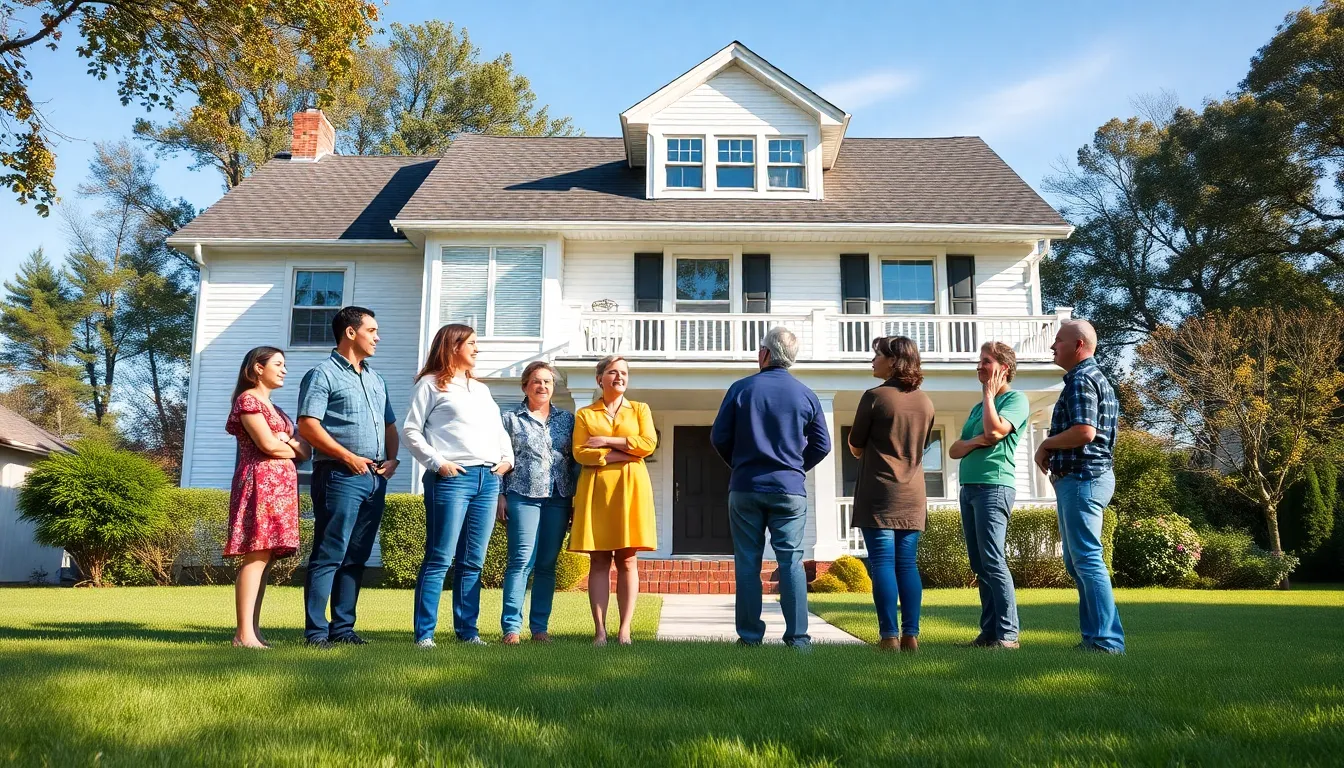Owning a home is like having a pet dragon—it’s thrilling but comes with its own set of fiery challenges. Just like you wouldn’t leave your dragon unguarded, you shouldn’t leave your biggest investment without protection. Homeowners insurance isn’t just a safety net; it’s your shield against the unexpected. From that surprise tree branch crashing through your roof to the infamous “oops, I spilled red wine on the carpet” moment, having the right coverage means you can tackle life’s curveballs with confidence.
But let’s face it: navigating the world of homeowners insurance can feel like trying to find a needle in a haystack. With so many options and jargon that sounds like it’s from another planet, it’s easy to feel overwhelmed. Fear not! This guide will break down the essentials, making sure you understand what you need to protect your castle without losing your sanity—or your sense of humor.
Table of Contents
ToggleUnderstanding Home Owners Insurance
Homeowners insurance serves as a crucial safeguard for property owners. This type of insurance protects against financial losses due to unexpected incidents.
What Is Home Owners Insurance?
Homeowners insurance is a policy that offers protection for a home and its contents. It typically covers damages from events like fire, theft, and natural disasters. In addition, it provides liability coverage if someone is injured on the property. Many lenders require homeowners insurance before approving a mortgage. Such insurance offers peace of mind, ensuring that homeowners can recover from potential financial setbacks.
Key Components of Home Owners Insurance
Key components of homeowners insurance include dwelling coverage, personal property coverage, liability protection, and additional living expenses. Dwelling coverage protects the physical structure of the home, while personal property coverage secures belongings inside. Liability protection covers legal claims against the homeowner, protecting against lawsuits. Additional living expenses help with costs incurred if the home becomes uninhabitable, covering hotel stays and meals. Understanding these components helps homeowners select the right policy for their needs.
Types of Home Owners Insurance Policies

Understanding the various types of homeowners insurance policies helps homeowners choose the right protection for their needs. Each policy type offers specific coverages and protections.
HO-1: Basic Form
HO-1 provides essential coverage for named perils, such as fire, lightning, windstorm, and hail. This basic form covers only specified events, leaving many risks unprotected. Homeowners often choose HO-1 for its affordability, as it tends to have lower premiums compared to broader policies. Limitations exist regarding coverage for personal property and liability, making it suitable for those seeking minimal protection. However, it doesn’t offer coverage for theft or vandalism, which may leave gaps in overall security.
HO-2: Broad Form
HO-2 expands protection by covering more perils than HO-1, including damages from falling objects, weight of snow, and accidental discharge of water. This policy provides coverage for both the dwelling and personal property, offering wider security. With lower deductibles than comprehensive options, homeowners often appreciate the balance of cost and protection. It still features named peril coverage, which means homeowners receive no protection against risks not specifically listed. Many find this policy a practical choice for safeguarding homes and belongings without excessive expenses.
HO-3: Special Form
HO-3 serves as the most common homeowners insurance policy, providing broad coverage for all perils except those specifically excluded. It covers both dwelling and personal property under all-risks conditions. Homeowners benefit from liability protection, ensuring coverage for injuries occurring on their property. With customizable options, HO-3 enables policyholders to add endorsements for additional protection. Impacts from natural disasters, such as earthquakes or floods, often require separate policies, but HO-3 covers everything else, giving extensive peace of mind.
HO-5: Comprehensive Form
HO-5 offers the most extensive coverage among standard policies, providing open perils protection for dwelling and personal property. This form includes a wider range of risks, ensuring comprehensive security against unexpected incidents. High-value homeowners, such as those with expensive belongings, often prefer this policy for its complete coverage. Additionally, the HO-5 typically features lower deductibles and fewer exclusions than other forms. Enhanced liability coverage further protects homeowners from potential lawsuits and claims, making it a robust option for those seeking maximum security.
Factors Affecting Home Owners Insurance Rates
Homeowners insurance rates vary based on several critical factors. These factors ultimately determine the cost of coverage for homeowners.
Location
Geographic location significantly impacts insurance rates. Areas prone to natural disasters, such as hurricanes or floods, typically see higher premiums. Proximity to fire departments, police stations, and hospitals can lower rates, as can neighborhoods with low crime rates. State regulations and local property values also play a role. Cities with higher home prices often demand increased coverage, influencing overall costs.
Home Condition
The condition of a home directly affects insurance costs. Homes built with high-quality materials often receive lower premiums due to their durability. Older homes, especially those needing repairs, may face higher rates due to increased risk. Upgrades, like modern wiring or high-quality roofs, can improve safety and reduce costs. Additionally, maintaining a home through regular inspections can further help to minimize potential rate increases.
Coverage Amount
The chosen coverage amount influences premium costs considerably. Higher coverage limits usually lead to increased rates, reflecting the greater financial risk to insurers. Homeowners must evaluate personal belongings and repair costs when selecting coverage. Policies with lower deductibles may offer greater protection but come with higher premiums. Balancing adequate coverage with manageable costs is essential for homeowners when determining their insurance needs.
Tips for Choosing the Right Policy
Selecting the right homeowners insurance policy requires careful consideration. Homeowners must understand their unique coverage needs to make an informed choice.
Assessing Your Coverage Needs
Evaluate coverage needs based on the home’s value and personal belongings. Calculate the cost to rebuild the home, factoring in current construction prices. Review valuable items, like art or jewelry, which may require additional coverage. Consider potential liability risks, such as pools or trampolines, that could lead to injuries on the property. Prioritize essential features like dwelling coverage and personal property protection while keeping additional living expenses in mind. Each homeowner’s situation varies, so personal preferences and lifestyle choices significantly influence decisions.
Comparing Insurance Providers
Look for reputable insurance providers known for reliability and customer service. Request quotes from multiple companies to facilitate direct comparisons of policies and premiums. Understand the coverage limits and deductibles each provider offers before making choices. Research customer reviews to gain insight into claims processing and overall satisfaction. Assess potential discounts that may apply based on factors such as bundling policies or having a security system in place. Weighing these factors can help homeowners find the best provider suited to their needs.
Homeowners insurance is more than just a policy; it’s a vital investment in peace of mind. By understanding the different types of coverage available and evaluating individual needs, homeowners can protect their property from unexpected events. With the right insurance in place, they can confidently face the challenges of homeownership, knowing they have a safety net to rely on. Taking the time to research and compare options will ensure they find a policy that not only fits their budget but also provides comprehensive protection. Ultimately, securing homeowners insurance is a smart move for anyone looking to safeguard their home and assets.


